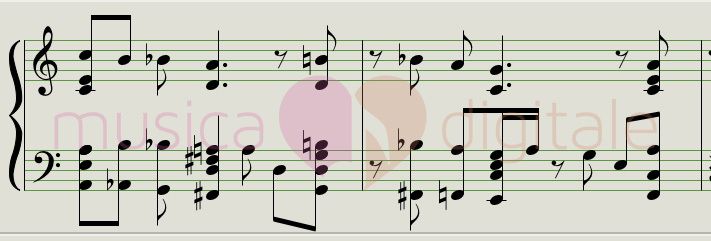
It's that time of the year. The most wonderful time of the year, actually.
Christmas songs abound, and there’s no way you can escape from the ever repeating joyful songs built around sleigh bells and warm, sweet voices.
But, besides chimes and rhymes, what does make a Christmas song so unmistakably christmas-ish?
This article tries to frame in a musical perspective the true essence of Christmas songs as we know them today. And will do so from a strictly musical perspective.
But first, so that there’s something to use as a reference, listen to this genre song, which I composed following the pop-gospel pastiche that makes Christmas songs sound like they do.
Granted, there are sleigh bells and chimes. And the lyrics have that exceedingly sweetened flavour that makes so many Christmas songs difficult to stand.
However, what really matters here are the harmonic and rhythmic structures. More so, from where these harmonic and rhythmic patterns come from.
As gospel music scholar Horace Clarence Boyer pointed out, in the early ‘30ies classic Christmas carols and songs began being adapted to the spiritual gospel music structure.
All along during the Great Depression, and later through the Second World War and the early fifties, gospel music influenced, and single handedly changed, the way Christmas songs sound.
The reason why this happened is rather obvious. Gospel music lends itself by nature to the whole Christmas idea.
Gospel derives from the old english words “God Spell”. Where spell means of course magic. And “Christmas Magic” is probably one of the most abused figures of speech.
The real meaning is subtler, and refers to at least two aspects:
- The real, spiritual, meaning of religious gospel chants
- The religious ecstasy, or trance, that believers experience
That’s why it’s so common to find pop-adapted gospel composition techniques in Christmas music.
Without delving deep in music theory, we can identify at least three common practices:
- The “Plagal Cadence”, that’s to say IV-I, as chord progression (think of “Oh, Happy Day”). The Plagal Cadence is also known with the name “Amen”, as the “Amen” word in hymns followed this cadence.
- Seventh Chords, especially the use of dominant sevenths
- Walking tenths. This is often used in gospel music to move between fourth and first chords.

Here’s an example of the gospel feeling extracted from the song at the beginning.
No matter how instruments are arranged, or what the lyrics actually say, these musical techniques are among the most easily associated to “that Christmas sound”.
Follow Susanna on Twitter: @SusannaQua
(This article was originally published on Musica-Digitale.it, December 23rd, 2016.)
